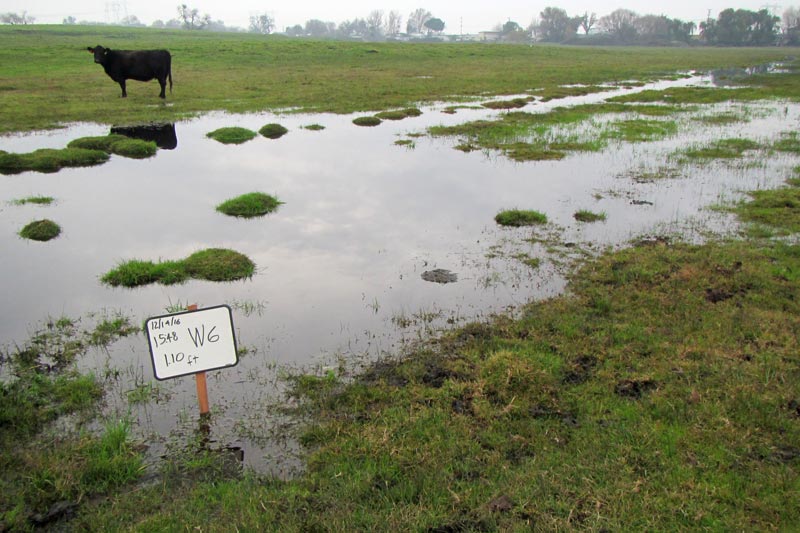Wetland & Floodplain

View Projects
CLICK HERESeasonal Wetland Habitats and Vernal Pools
Vernal pools, seasonal wetlands, and intermittent stream channel are one of our favorite areas of practice to which our deep-seated set of hydrologic, geomorphic, engineering, and other technical skills are applied. Our firm has experience throughout California, Nevada, and Oregon with maintaining or restoring the hydrology of vernal pools, seasonal wetlands, and intermittent stream channels as adjacent land uses change or stakeholders desire to restore previously lost habitats.
We specialize in all aspects of wetland work:
- Water-quality treatment wetlands
- Evaluation of potential environmental impacts to wetlands
- Water and sediment quality of intermittent hydrologic systems
- Surface and groundwater hydrologic interactions
- Channel stability and flood hydrology of perennial and intermittent streams
- Wetland protection and restoration for mitigation
- Sedimentation and sediment management
- Estuary, lagoon, pool, pond, lake, mountain meadow, and reservoir management
- Conservation planning for wetland protection
Floodplain Restoration of Ecosystem Functions
Much of our work focuses on the reestablishment of structure and function of fluvial ecosystems with their floodplains, with the goal of returning the ecosystem to a more natural state with functioning processes. Our restoration practice aligns with a green infrastructure approach; water management that protects and restores the natural water cycle. A restored floodplain and associated wetlands can provide benefits of flood risk reduction, improvement of water quality, additional habitat for fish and wildlife, and erosion and sediment control. A riverine floodplain naturally stores stormwater runoff, decreasing the frequency and intensity of flood events. Our restoration design goals focus on connecting floodplains to channels are focused on:
- Slowing flood waters by allowing water to flow onto floodplain surfaces, thereby reducing flood depth and velocities as well as bank erosion.
- Restoring and improving water supply: water quality naturally improves when percolated and recharged into the local groundwater quality.
- Restoration and enhancement of aquatic and terrestrial habitats, increasing habitat area for plants, animals, fish, and all biotic as well as abiotic elements.
- Safeguard people and property by lessening flood hazards; offer health and ecological benefits for citizens with additional outdoor space.
We partner with agencies, resource conservation districts, habitat agencies, watershed councils, and land trusts to restore floodplain functions. We are adept at applying geomorphic, hydrologic, and hydraulic principles that provide rivers with more room to accommodate flooding, in settings from constrained urbanized areas to preserving open spaces at all levels of a watershed (from source to sea).